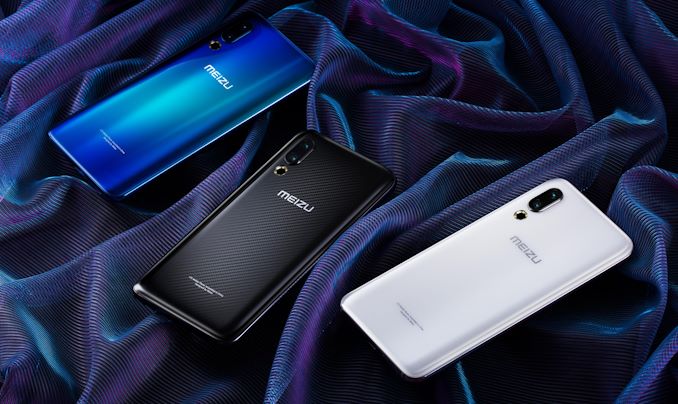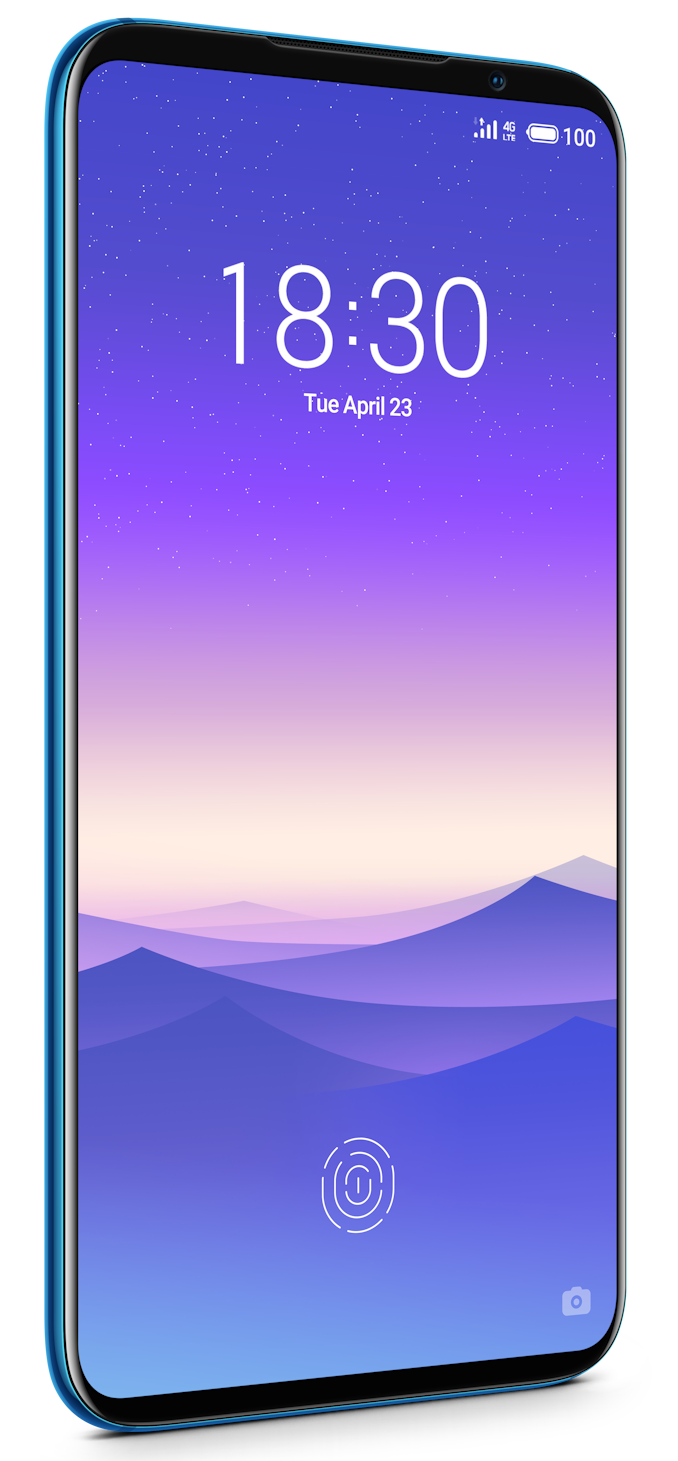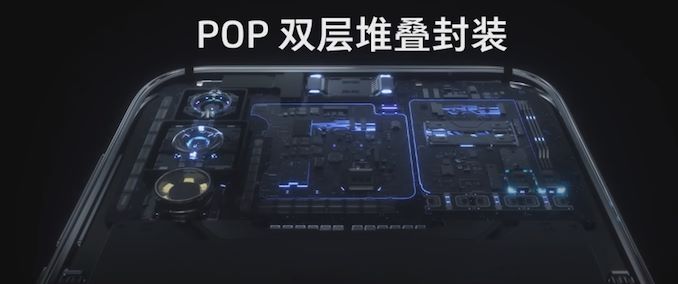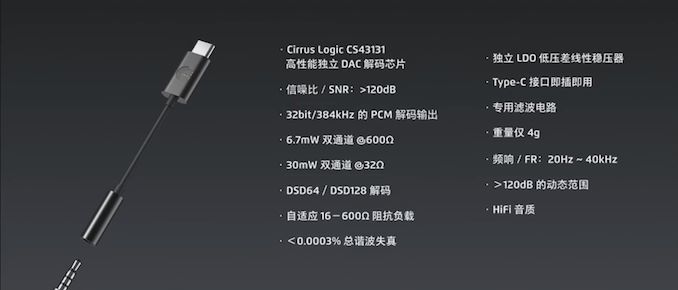Meizu Releases The 16s: 48MP and Snapdragon 855
by Andrei Frumusanu on April 24, 2019 5:00 AM EST- Posted in
- Mobile
- Smartphones
- Meizu
- Meizu 16s

Meizu is one of the Chinese vendors that we had covered early on over the last few years. One of the early issues with the company’s flagships is that they most often lacked the proper frequency bands for western networks, particularly the lack of B20 for European carriers, even though the company's mid- and low-range products are very much prevalent in some European markets such as France. The company last year looked to address this issue, in coincidence with the switch from Samsung’s Exynos SoCs to Qualcomm’s newest Snapdragons, and introduced the Meizu 16 and 16th with the Snapdragon 710 and Snapdragon 845 with dedicated overseas models.
Today’s announcement is about the new Meizu 16s – a full hardware refresh of last year’s models including the brand-new Snapdragon 855 and a new camera sensor, as well as an internal redesign to accommodate a notably bigger battery.
| Meizu 16s | |||
| Meizu 16s (Model M1971) |
|||
| SoC | Qualcomm Snapdragon 855 1x Kryo 485 (Cortex-A76) @ 2.84GHz 3x Kryo 485 (Cortex-A76) @ 2.42GHz 4x Kryo 485 (Cortex-A55) @ 1.80GHz Adreno 640 @ 585MHz |
||
| Display | 6.2" OLED 2232 x 1080 (18.6:9) |
||
| DRAM | 6/8GB LPDDR4X | ||
| Storage | 128 GB (256GB China only) |
||
| Dimensions | 151.9 x 73.4 x 7.6mm | ||
| Weight | 165g | ||
| Battery Capacity | 3600mAh | ||
| Wireless Charging | n/a | ||
| Rear Cameras | |||
| Main | 48MP IMX586 0.8µm w/ 2x2 Bayer filter (1.6µm in 12MP) f/1.7 w/OIS |
||
| Telephoto | 20MP IMX350 f/2.6 3x zoom/telephoto |
||
| Front Camera | 20MP Samsung 3T2 f/2.2 |
||
| I/O | USB-C No 3.5mm headphone jack |
||
| Wireless (local) | 802.11ac Wave 2 Wi-Fi 2x2 MIMO Bluetooth 5.0 LE |
||
| Cellular |
GSM:B2/B3/B5/B8; WCDMA:B1/B2/B4/B5/B8
CDMA:BC0 ; TD-LTE:B40
FDD-LTE:B1/B2/B3/B4/B5/B7/B8/B20 (EU Compatible)
|
||
| Dual-SIM | 2x Nano-SIM Dual-Standby | ||
| Launch Price | 6+128GB: ¥3198 RMB (415€ + VAT) 8+128GB: ¥3498 RMB (454€ + VAT) 8+256GB: ¥3998 RMB (China only) |
||
Powered by the new Snapdragon 855 SoC, the new Meizu 16s allows the company to be among the first to employ the new generation SoC in this year’s products. Qualcomm’s new SoC this year impressed a lot and will certainly be a solid foundation for the 16s.
The phone comes with either 6 or 8GB of LPDDR4X with 128GB or 256GB of storage, however the 8+256GB combination won’t be available outside of China.
Although the new 16s seems like a hardware upgrade to the 16th, it’s also very much a design upgrade, if you look closely enough. Meizu still maintains a 1080 OLED display, however the screen has grown bigger to 6.2”. This increase however didn’t come at a cost of a bigger phone though, as the 16s retains the largely the same form-factor as its predecessor. Instead Meizu was able to further reduce the top and bottom bezels of the design and elongate the screen aspect-ratio.
The screen continues to be AMOLED and the panel is supplied by Samsung. Meizu advertises that it calibrated the screen of the 16s down to an accuracy of 1.5 JNCD and says it’s ahead of the competition in this regard.
Also introduced in the 16 and now upgraded in the 16s, is the new under-screen fingerprint sensor which is said to have doubled its unlocking speed.

A key part of achieving this new design was the new front-camera which is a new 20MP Samsung 3T2 sensor module which is said to be the first of its kind employed in a phone and distinguishes itself by being extremely small, in order to fit into the small top bezel.
Further design changes are obvious when flipping the phone around, here we see that the cameras have shifted over from the middle of the phone to the side. I’m not too big fan of this new setup as it’s quite too common among other vendors, however this is just my subjective opinion.
Among the hardware changes is the main camera sensor: Here Meizu has swapped in the 12MP unit of the 16s in favour of a new 48MP sensor: The new IMX586. The sensor actually isn’t new and we already had the chance to test it out in the Honor View20 review back in January and found it to be an excellent performer. The Meizu 16s however improves on what we saw in the View20 as the phone has a wider f/1.7 aperture lens, as well as includes OIS which is incredibly important for video recording.
The secondary rear camera module is a 20MP IMX350 sensor with a f/2.6 aperture and a 3x optical zoom for telephoto shots as well as bokeh mode shots.
What the new shifted camera design does allow for, is a rearrangement of the internal motherboard layout to accommodate a much bigger battery: The 16s increases the battery capacity from 3010mAh to 3600mAh, again without changing the dimensions of the phone. One thing that had to give however was the weight, which increases from 152g to 165g.
An interesting aspect of the motherboard redesign is that Meizu discloses that it uses a “POP” or PCB on PCB design, meaning it uses the same “sandwitched” PCB designs as Apple’s iPhone X/XS and the new Huawei P30 Pro. What is surprising here is just the fact that Meizu was able to introduce this technology in a phone in the price-range of the 16s – something I had thought we wouldn’t see for several years to come.
It’s to be noted that in the design change, Meizu dropped the 3.5mm headphone jack. This is very odd as Meizu has a long history of delivering quality audio solutions. While seemingly Meizu couldn’t resist the urge to drop the headphone jack, the company did however make efforts for providing a good alternative in the form of the new 3.5mm headphone dongle: The new unit employs a new Cirrus Logic CS43131 32bit/384KHz DAC which promises to have outstanding SNR and THD values, something almost all other Android vendors have failed to provide in existing 3.5mm dongles.
It’s to be noted this unit isn’t actually bundled with the phone, as the company advertised it for ¥169 (21€) standalone, or ¥99 (13€) when ordered as a package.
The Meizu 16s orders start on April 28th in China with the 6+128GB variant coming in at ¥3198 (415€+VAT), the 8GB+128GB at ¥3498 (454€+VAT) and finally the 8+256GB being China-exclusive at ¥3998. As a reminder, the Chinese versions of the phone lack the proper European LTE bands and it’s recommended to wait for availability for the overseas variant which comes with the relevant Google Play services and correct frequency band support.














19 Comments
View All Comments
Awful - Wednesday, April 24, 2019 - link
So much better than a whole-punch or notch. Looks like there should be no issue fitting two along the top for dual cameras either.Xex360 - Wednesday, April 24, 2019 - link
Another failed concept, why remove the headphone jack? The only reason I can think of is sheeponism!sonny73n - Thursday, April 25, 2019 - link
Never heard of Bluetooth? Do some research about how audio works before shouting BS.KimGitz - Saturday, April 27, 2019 - link
They have Bluetooth 5.0 which is fantastic for wireless audio. That dongle though is something special. If they have wireless charging then having a USB-C dongle especially one with such a high quality DAC is perfectly fine. Even without wireless charging I wouldn’t mind switching between Bluetooth and wired on my headphones to allow the phone to charge.I wonder if that USB-C headphone dongle is class compliant and able to work with 3rd party devices?
MrSpadge - Wednesday, April 24, 2019 - link
I'd really like to see this compared to a Mi 9. Both seem to have everything I'm looking for in a new phone.jospoortvliet - Thursday, April 25, 2019 - link
Now put AndroidOne on it and you'll outsell Huawei in Europe and the USA within a year.jospoortvliet - Thursday, April 25, 2019 - link
Reason:* people don't trust you as relatively unknown brand to deliver regular updates, but they trust the AndroidOne program
* people in EU/US tend to not like all the customization
* you have good, reliable software without any non-local/non-translated (read: Chinese) left-overs with little effort
* if you want to add some custom sauce, do what Motorola does - have an app for that.
phoenix_rizzen - Friday, May 10, 2019 - link
If it ships with Android 9 (dare I dream?), then it should be fairly easy to use generic system images with Project Treble support to replace the version of Android that ships with it.If it ships with Android 8, Project Treble support will be there, although it's not as advanced as 9 support. Should still be doable to use GSIs to replace the OS.
Not sure if it requires an unlocked bootloader, though. I don't have any devices that support Project Treble. :(
Ckyannanta - Monday, April 29, 2019 - link
Have you ever seen so many sexy girls in one place? Theyre right here: http://datinghookupmeet.cf/ckyannanta